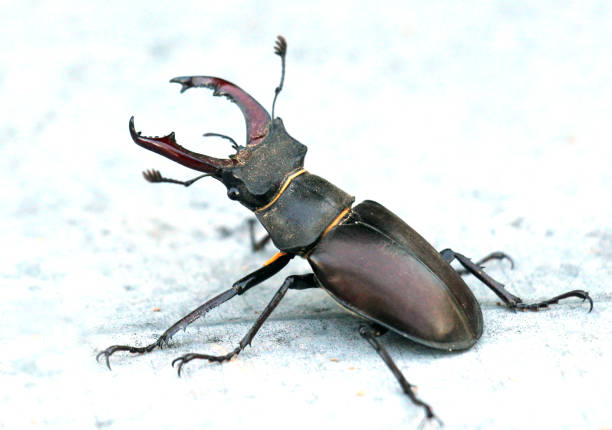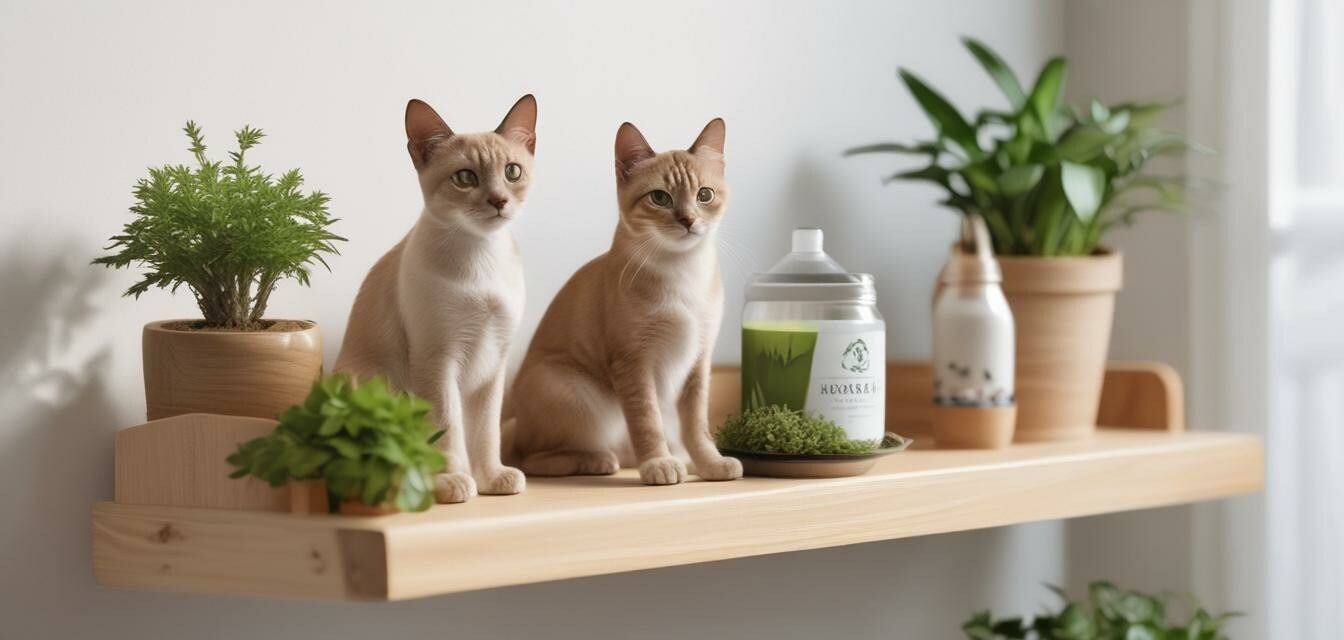
Keeping Insects as Pets: From Ant Farms to Giant Beetles
Explore the fascinating world of insect pet keeping—from constructing ant farms to caring for majestic beetles—offering insights into their habitats, diets, and the ethical considerations involved.
🐶 Pet Star
40 min read · 16, Apr 2025

Introduction: The Allure of Insect Pets
In recent years, keeping insects as pets has transitioned from a niche hobby to a mainstream interest. Enthusiasts are captivated by the intricate social structures of ant colonies, the impressive size of beetles, and the educational value these creatures provide. This article delves into the world of insect pet keeping, focusing on ant farms and giant beetles, exploring their care requirements, ethical considerations, and the growing popularity of this unique hobby.
Ant Farms: A Window into the Underground World
Understanding Ant Colonies
Ants are social insects that live in highly organized colonies, typically consisting of a queen, workers, and brood (eggs, larvae, and pupae). Observing an ant farm allows enthusiasts to witness firsthand the division of labor, communication methods, and the meticulous construction of tunnels and chambers.
Setting Up an Ant Farm
Creating a suitable environment for ants involves selecting the right type of ant farm, such as gel-based or sand-and-glass setups. It's crucial to choose a species that thrives in captivity, like the common black garden ant (Lasius niger). The habitat should mimic natural conditions, providing appropriate humidity, temperature, and darkness to ensure the ants' well-being.
Feeding and Maintenance
Ants require a balanced diet of proteins, sugars, and water. Offering a variety of foods, such as honey, small insects, and seeds, can meet their nutritional needs. Regular cleaning of the ant farm is essential to prevent mold growth and maintain a healthy environment.
Giant Beetles: Majestic Insects as Pets
Popular Species
Giant beetles, such as the Goliath beetle (Goliathus goliatus), rhinoceros beetle (Dynastes hercules), and stag beetle (Lucanus cervus), are among the most sought-after insects in the pet trade. These beetles are admired for their size, strength, and striking appearances.
Habitat Requirements
Providing an appropriate habitat for giant beetles involves selecting a spacious enclosure with adequate ventilation. The substrate should be deep enough to accommodate burrowing, and the environment should maintain consistent temperature and humidity levels to support the beetles' lifecycle stages.
Diet and Care
Giant beetles feed on a diet rich in fruits, tree sap, and decaying organic matter. It's important to provide fresh food regularly and remove uneaten portions to prevent spoilage. Handling should be minimal to reduce stress and prevent injury to the beetles.
The Ethical Dimensions of Insect Pet Keeping
Conservation Concerns
The increasing demand for exotic insects has raised concerns about over-collection and the impact on wild populations. For instance, the recent interception of 5,000 queen ants, including the rare Messor cephalotes, highlights the risks of illegal wildlife trafficking .
Captive Breeding vs. Wild Capture
Opting for captive-bred insects over wild-caught specimens helps reduce pressure on natural populations. Many breeders now focus on sustainable practices, ensuring that insects are bred in controlled environments and sold ethically.
Legal Considerations
Before acquiring exotic insects, it's essential to research local regulations and obtain any necessary permits. In some regions, certain species may be protected, and unauthorized collection or trade can result in legal penalties.
The Educational Value of Insect Pet Keeping
Learning Opportunities
Maintaining an insect habitat offers numerous educational benefits. Observers can learn about entomology, ecology, and the importance of insects in various ecosystems. Children, in particular, can develop a sense of responsibility and empathy by caring for these creatures.
Scientific Observation
Insect pet keeping provides a hands-on opportunity to study behaviors such as foraging, communication, and reproduction. Documenting these observations can contribute to a deeper understanding of insect biology and behavior.
Insect Husbandry: Lifecycle Management and Breeding
Understanding Insect Lifecycles
One of the most captivating aspects of keeping insects as pets is witnessing their metamorphosis. Many insects go through complete metamorphosis (egg, larva, pupa, adult), especially beetles and butterflies. For instance, the Hercules beetle (Dynastes hercules) spends most of its life in the larval stage, which can last up to two years, compared to only three to six months as an adult.
For ant keepers, the lifecycle of a colony begins with the nuptial flight, where winged males and virgin queens mate. Once fertilized, the queen starts a new colony, laying the first batch of eggs which become the initial worker ants.
Understanding these lifecycles is critical for effective husbandry. It helps enthusiasts time their care schedules, adjust habitat conditions accordingly, and, in the case of breeding, anticipate environmental triggers that stimulate reproduction.
Captive Breeding Practices
Breeding insects in captivity has grown from a scientific endeavor into a hobbyist practice. For many beetle species, breeding involves controlling substrate composition, temperature, and humidity to replicate native conditions. Breeders often use decaying hardwood or leaf litter to allow females to lay eggs.
Ant breeding is less common due to the complexity of establishing and supporting queen-right colonies (those with a reproductive queen). However, breeders have made significant strides with species like Camponotus and Lasius, maintaining viable colonies over generations.
Captive breeding offers numerous benefits: it helps conserve wild populations, provides genetic diversity, and enables long-term study without resorting to wild-caught specimens. It also reduces risks of introducing invasive species via uncontrolled release.
Insects for Beginners: Ideal Starter Species
Low-Maintenance Insects
For newcomers, choosing the right insect is crucial for an enjoyable and sustainable experience. Stick insects (Phasmatodea), praying mantises (Mantodea), and mealworms (Tenebrio molitor) are ideal starter species due to their minimal care requirements and hardy nature.
- Stick Insects: Known for their camouflage and slow movements, they are gentle and easy to handle. They feed on fresh leaves like blackberry and oak.
- Praying Mantises: Fascinating predators that thrive in small enclosures and feed on live prey such as crickets and fruit flies.
- Mealworms: Popular in classrooms, these larvae of the darkling beetle are great for observing metamorphosis and are also used as feeder insects.
These species help beginners understand the basics of insect care, including enclosure setup, humidity control, and diet management, without overwhelming complexity.
Insects to Avoid Initially
Some insects, though captivating, may not be ideal for beginners due to their complex needs or fragility. These include:
- Giant beetles (e.g., Goliath or Hercules beetles) – Their large size requires specialized housing and controlled humidity levels.
- Exotic ants (e.g., Messor cephalotes) – Difficult to acquire legally and require precise environmental conditions.
- Butterflies and moths – Though beautiful, their short lifespan and delicate wings make them less interactive.
Starting with manageable species ensures a positive experience and sets the foundation for exploring more advanced insect keeping.
Designing the Perfect Insect Habitat
Customizing Enclosures
Creating an enriching habitat is essential for insect well-being. While commercial enclosures are widely available, many enthusiasts customize their setups to better replicate natural environments.
- For Ants: Modular ant farms with foraging areas, humidity chambers, and red acrylic covers simulate underground conditions while allowing observation.
- For Beetles: Terrariums with layers of substrate, decayed wood, and foliage mimic forest floors and allow for burrowing.
- For Mantises and Stick Insects: Vertical space is key. Enclosures should have branches for climbing and molting, along with mesh tops for ventilation.
Substrate choice is also important—organic soil, coconut fiber, and vermiculite are popular options depending on the species’ needs. Lighting should mimic natural day/night cycles, and some species benefit from UV exposure.
Maintaining Environmental Parameters
Humidity, temperature, and light must be closely monitored to prevent stress or health issues. Digital hygrometers and thermostats can automate this process.
- Humidity: Tropical species require 70–90% humidity, achievable via misting or humidifiers.
- Temperature: Most insects thrive between 22–28°C (71–82°F), but it’s vital to research species-specific needs.
- Ventilation: Poor airflow can lead to mold and respiratory problems. Enclosures must balance humidity and air circulation.
By fine-tuning these parameters, keepers can ensure insects not only survive but thrive.
Human-Insect Bonding: Do Insects Make Good Companions?
Interaction and Observation
While insects may not offer the same emotional feedback as mammals, they provide intellectual stimulation and aesthetic enjoyment. Observing the social dynamics of an ant colony or the regal stillness of a mantis evokes a sense of wonder.
Insects can also be surprisingly interactive. Some beetles recognize feeding routines, and mantises may track their owners’ movements. Children often develop deep curiosity and respect for insects through observation and responsible care.
Pet or Display?
This raises the question—are insects pets or just displays? The answer varies by individual. For some, ants in a farm are living décor; for others, they are subjects of study and even affection. Like aquarists with fish tanks, insect keepers derive joy from maintenance, customization, and watching their “mini-worlds” evolve.
The Global Community of Insect Enthusiasts
Online Forums and Social Media
With the rise of social media, insect keeping has evolved into a global community. Platforms like Reddit (e.g., r/antkeeping), Discord servers, and specialized Facebook groups allow enthusiasts to share setups, breeding advice, and rare species sightings.
YouTube channels such as "AntsCanada" and "The Dark Den" have amassed millions of followers, offering educational content and personal insights into insect husbandry. These creators demonstrate how insects can be both captivating pets and valuable educational tools.
Clubs and Expositions
Insect expositions and fairs are growing in popularity across the globe. Events like "BugFest" in the U.S., the "Insect Fair" in Tokyo, and various terrarium expos in Europe showcase rare species, DIY setups, and expert talks.
These gatherings promote ethical insect keeping, foster collaboration among breeders, and introduce the hobby to a broader audience. They also raise awareness of conservation efforts and legal frameworks.
Challenges and Controversies
Health and Safety Risks
While insects are generally low-risk pets, there are still safety considerations. Some species possess chemical defenses or mild venom, like assassin bugs or certain ants. Proper handling techniques and protective gloves may be necessary.
There’s also the risk of allergic reactions to insect bites, stings, or frass (droppings), particularly in sensitive individuals. Keepers should research any potential health risks before choosing a species.
Invasive Species Threats
Irresponsible release of captive insects can have dire environmental consequences. Species like the Argentine ant (Linepithema humile) have become invasive pests due to accidental or intentional release. Insects should never be released into the wild unless they are native to the area and release is explicitly permitted.
Ethical Debates
As with all pet keeping, ethics play a role. Is it fair to confine insects for human entertainment? Opinions vary widely. Advocates argue that with proper care, insects can live longer, safer lives in captivity. Critics worry about the commodification of life, particularly when rare species are collected from the wild for profit.
Ultimately, ethical insect keeping relies on informed, responsible ownership and support for sustainable practices.
The Future of Insect Pet Keeping
Technological Advancements
Technology is transforming how insects are kept. Smart terrariums now include Wi-Fi-controlled heating, lighting, and humidity. 3D printing allows for customizable habitats and accessories, making insect keeping more precise and personalized.
Artificial intelligence is even being used to monitor insect behavior and health patterns through visual recognition, offering new insights for researchers and hobbyists alike.
Education and Conservation Integration
Schools and museums are increasingly incorporating insect habitats into STEM education. Ant farms and beetle larvae offer hands-on science opportunities, promoting curiosity about biology, environmental science, and conservation.
Insect keepers are also playing a role in ex-situ conservation programs. Captive breeding of endangered species like the Lord Howe Island stick insect (Dryococelus australis) demonstrates how hobbyist knowledge can support global biodiversity.
A Shift in Perspective
Cultural attitudes toward insects are gradually shifting. No longer seen solely as pests, insects are being appreciated as sentient, ecologically vital beings. Pet keeping serves as a gateway to this newfound appreciation, fostering empathy and environmental stewardship.
Conclusion
Insect pet keeping is a gateway to a deeper appreciation of the natural world. What may begin as a simple ant farm or a fascination with a brightly colored beetle often evolves into a lifelong passion rooted in learning, observation, and stewardship. Unlike traditional pets, insects offer an entirely different experience—one that is less about interaction and more about exploration, patience, and discovery.
Whether it’s the industrious behavior of an ant colony building its underground empire or the slow, deliberate movements of a stick insect blending into its surroundings, each species tells a story of evolution, adaptation, and ecological importance. The low-maintenance nature of many insect pets also makes them accessible to a wide audience, including young learners, city dwellers, and busy professionals.
However, this unique form of pet ownership is not without responsibility. Ethical sourcing, proper care, and understanding the ecological consequences of keeping or releasing insects are all essential considerations. When approached thoughtfully, insect keeping becomes a sustainable, educational, and ethically rewarding endeavor.
Moreover, with the rise of online communities, educational content, and expositions, the world of insect keeping is more accessible than ever. Whether you’re a novice observing your first worker ant carry food or an experienced breeder managing a rare beetle species, there’s always something new to learn and share.
As the popularity of insect pets continues to grow, so too does the potential to influence broader discussions on conservation, biodiversity, and humanity’s relationship with the smallest yet most essential creatures on Earth. Insects may be tiny, but in the lives of those who keep and care for them, their impact is enormous.
Q&A Section
Q1. What are the easiest insects to keep as pets?
A: Stick insects, mealworms, and some mantids are excellent for beginners due to their simple care requirements and hardiness.
Q2. Are insect pets safe for children?
A: Yes, many insects are safe and educational for children. Always supervise handling and avoid species with defensive chemicals or stingers.
Q3. How long do pet insects live?
A: It varies. Ants can live several years in a colony; stick insects typically live 6–12 months; large beetles may live up to 1 year as adults, but much longer in the larval stage.
Q4. Can insects recognize their owners?
A: While most insects don’t form bonds like mammals, some show learned behaviors such as anticipating feeding times or responding to movement.
Q5. What do pet insects eat?
A: Diet depends on the species. Ants enjoy sugars and proteins, beetles may eat fruits and sap, and mantids require live prey.
Q6. Do insects need a lot of space?
A: Most require very little space, but it’s important to simulate their natural environment with appropriate substrate, humidity, and ventilation.
Q7. Is it legal to keep any kind of insect?
A: No. Some species are protected or illegal to own without a permit. Always check local wildlife laws before acquiring exotic insects.
Q8. Can I keep multiple insect species in one enclosure?
A: Generally, no. Mixing species can lead to stress, competition, or predation. Each species should have its own tailored environment.
Q9. Where can I buy insects ethically?
A: Reputable breeders, educational suppliers, and certified online marketplaces are your best options. Avoid wild collection and illegal imports.
Q10. What are the benefits of keeping insects as pets?
A: Insect keeping fosters learning, encourages environmental awareness, and requires minimal space and maintenance while offering immense visual and educational rewards.
Similar Articles
Find more relatable content in similar Articles

How Climate Change Affects Wild and Domestic Animals...
Climate change is dramatically.. Read More

Vegan Pet Toys and Accessories That Last Longer...
As pet owners grow more eco-co.. Read More

How Pets Strengthen Family Bonds...
Pets are more than just compan.. Read More

Sustainable Pet Products: What to Look for in 2025...
As sustainability becomes a ce.. Read More
Explore Other Categories
© 2024 Copyrights by rPets. All Rights Reserved.